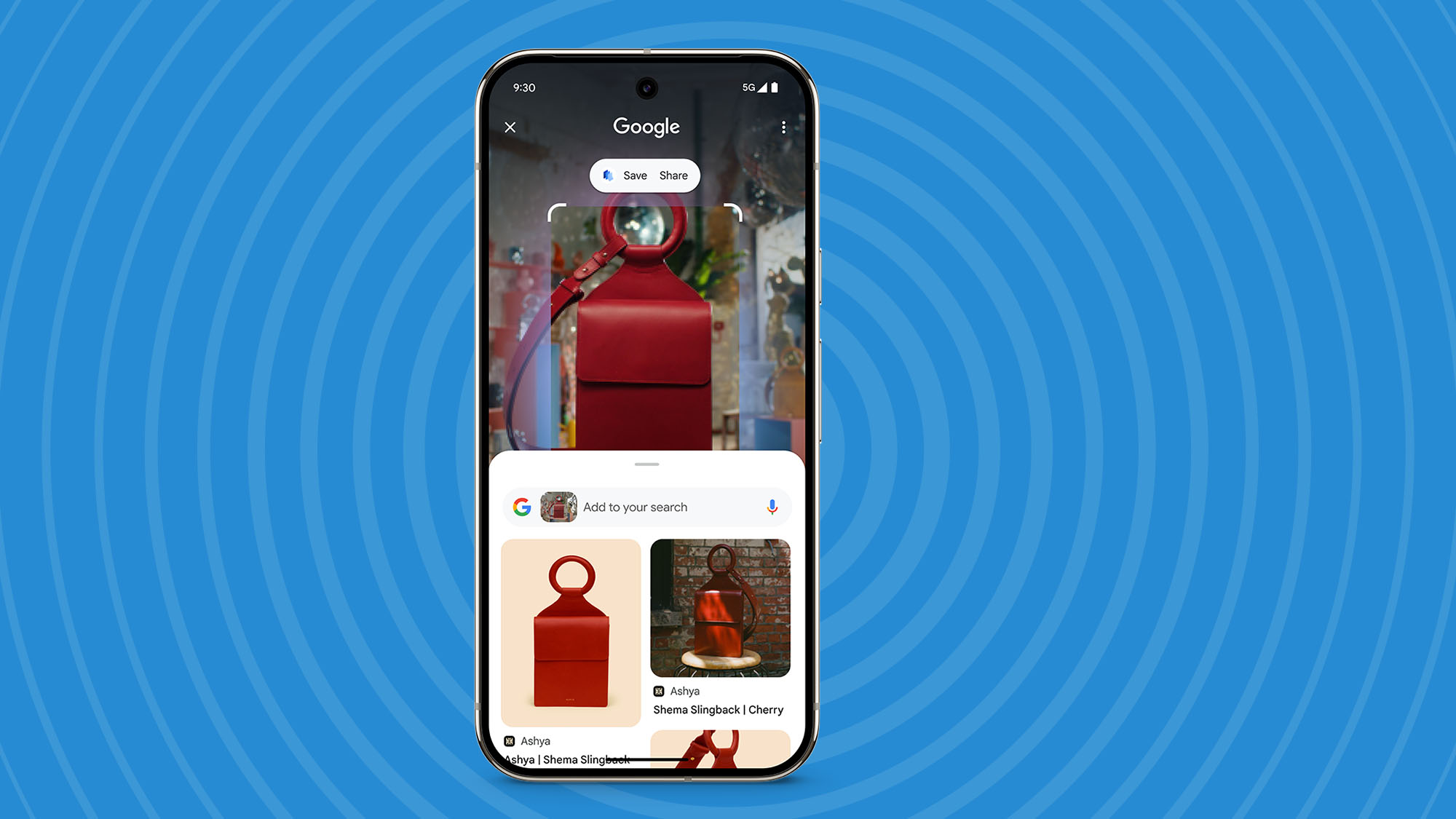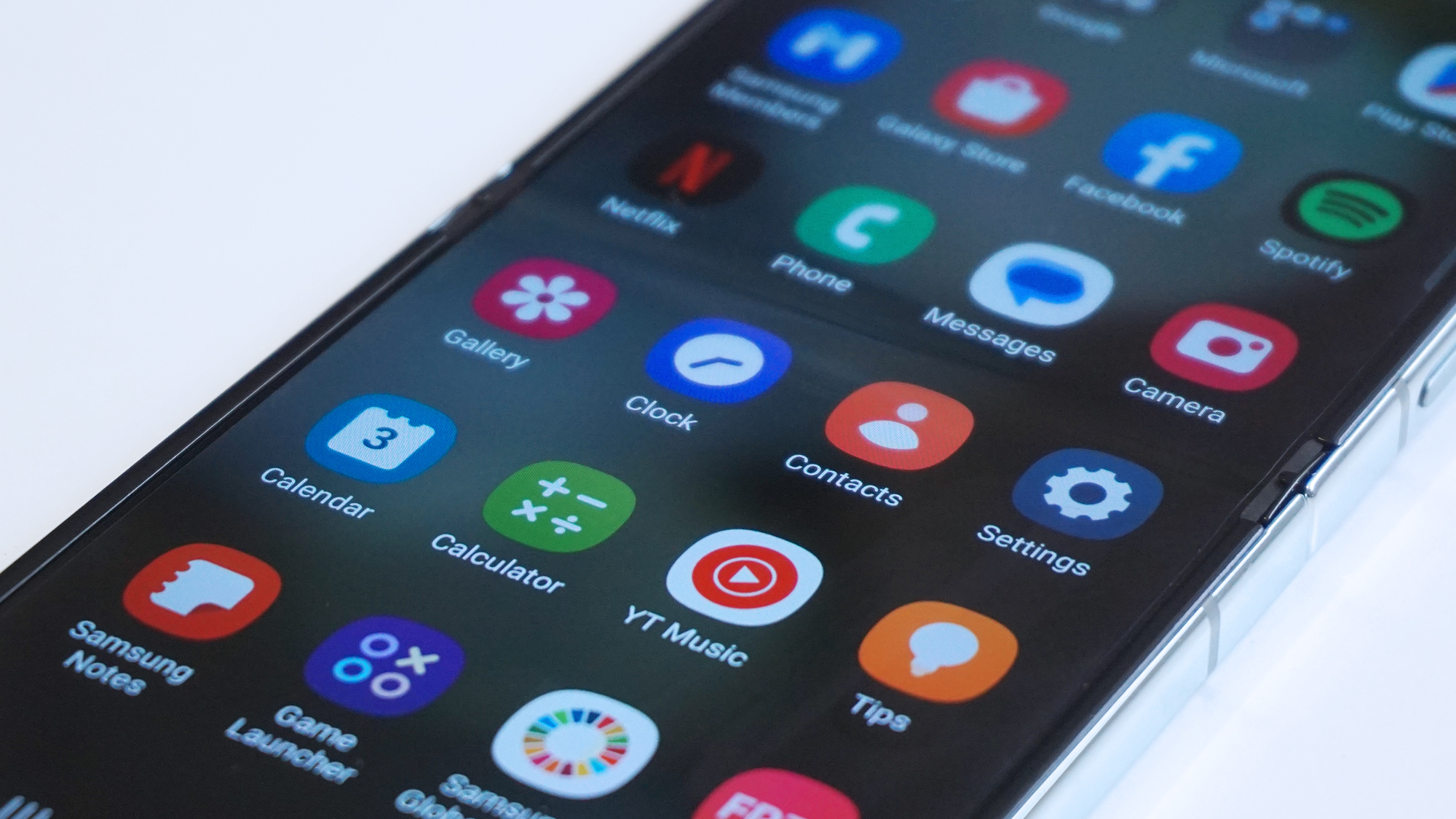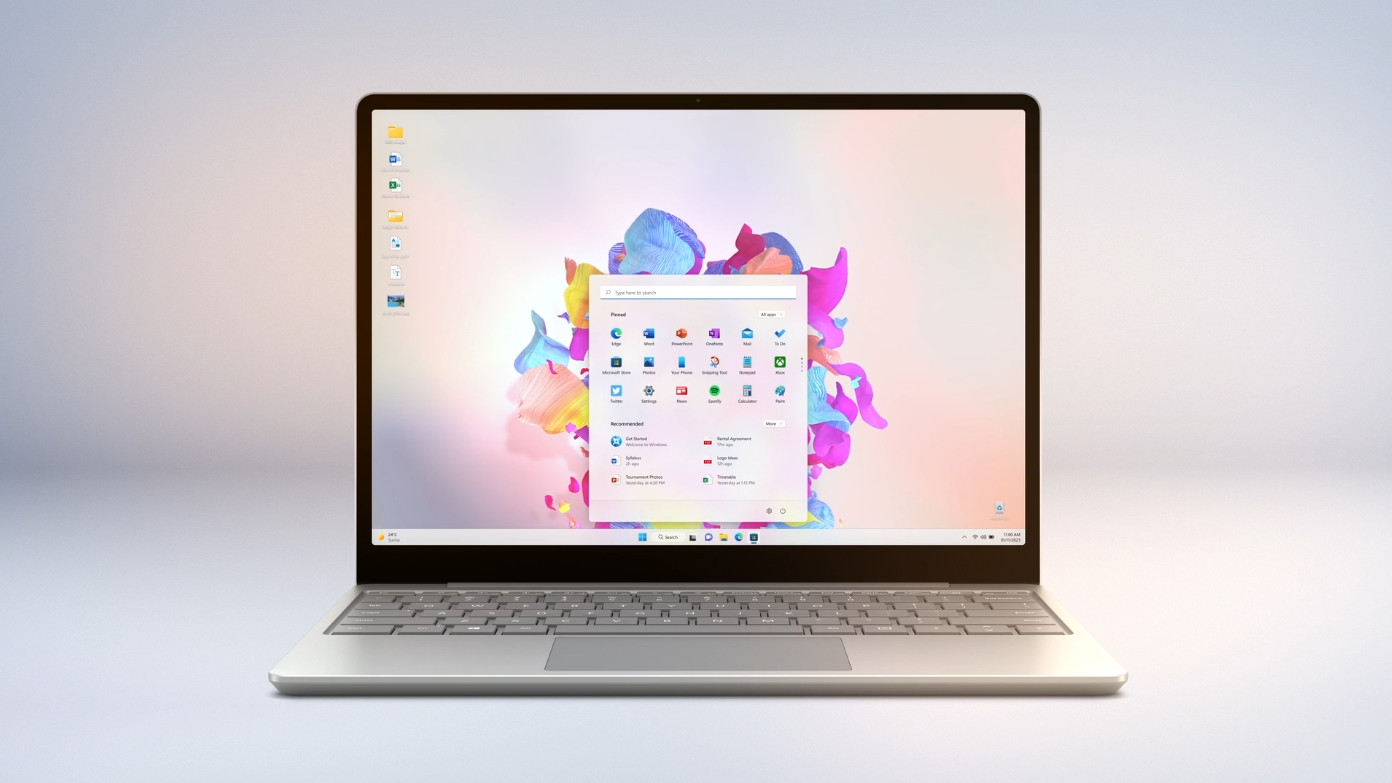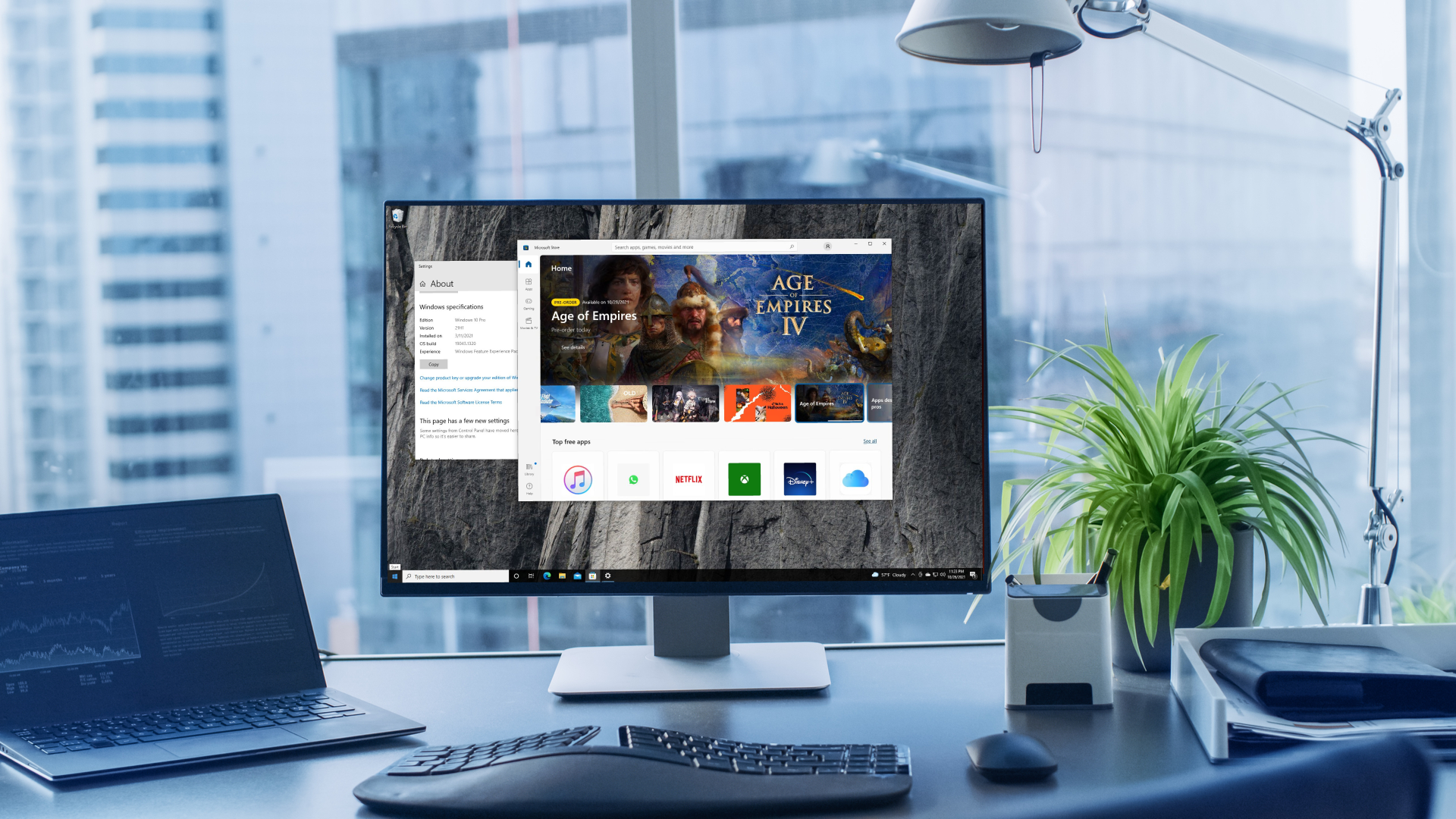Do NOT follow this link or you will be banned from the site!
Feed aggregator
Who deserves this promotion? Some managers are asking ChatGPT.
Managers are relying on AI tools to make promotion and other personnel decisions. Experts say it's a litigation risk.
Microsoft Pledges $4 Billion Toward A.I. Education
Microsoft said it would provide cash, artificial intelligence tools and computing services to schools, colleges and nonprofit groups.
X CEO Linda Yaccarino Says She Is Leaving Elon Musk’s Platform
Linda Yaccarino, whom Elon Musk hired to run X in 2023, grappled with the challenges the company faced after Mr. Musk took over.
Google just announced 5 new Gemini features coming to Android, and it’s good news for fans of foldable smartphones
Samsung Galaxy Unpacked's many new products and features have not left out AI examples. Plenty involved Google and its Gemini family of AI models, with a host of new features coming to Android devices with the new Android 16 and Wear OS 6 systems. Here are some of the ones to be the most excited for.
Gemini Live gets way more useful on foldables
Gemini Live is a way for Google's AI companion to be present on a continuous basis. Rather than just asking a question and moving on, you can have it on hand to help as you follow a cooking tutorial, fix your bike, or do yoga. Starting with the Galaxy Z Flip7, Gemini Live will now be accessible right from the external screen, meaning you won't have to even unfold the device to interact with the AI.
You'll also be able to link Gemini Live via Flex Mode with full camera integration. So, you might flip your phone halfway open, tap the camera button, and have Gemini be a hands-free AI assistant that can actually see what you're doing or what's happening around you and offer advice on your half-completed DIY project or your latest outfit. You can show Gemini what you're looking at and get on-the-spot feedback without fully unfolding your phone.
Circle to Search gets a big Gemini upgrade
Circle to Search is Google Gemini's party trick of looking up things you draw a circle around on your screen, like a photo or a phrase written in a text you're looking at. It's a way to get Google Search results without switching apps. The trick is becoming a lot more impressive with an AI Mode upgrade.
Now, when you circle a word, image, or phrase, Gemini doesn’t just look it up on Search; it starts up the AI Mode version of online search with a conversation that allows you to ask follow-up questions and look into related ideas within the same setup. You can discuss complex topics right from your screen with Gemini without switching among multiple tabs and apps.
Gaming the CircleThat's not the only major upgrade to Circle to Search. The feature will now try to entice people playing video games to look things up just like someone circling an unfamiliar plant. The new Gemini-powered feature offers mobile gamers help in the context of the game. You can just circle something on the screen as you're playing, like an item, enemy, or puzzle, and Gemini will identify it and offer timestamped advice based on your progress about what to do next if you're stumped. It's sort of an interactive walkthrough and strategy guide that you don't need to stop playing to look through.
Gemini Live starts talking to your apps
Until now, Gemini has mostly been incorporated into Google apps and services. But, Gemini Live will now start integrating with native device apps, starting with Samsung’s Calendar, Notes, and Reminders apps. So, you could ask Gemini to summarize your day, add reminders about your next meeting, and organize your notes about what to buy for a vacation you took last week without opening those apps. Other apps will start offering their information to you through Gemini Live soon, with the end goal apparently a more proactive AI manager of your life.
Gemini finally shows up on your wrist
Google Assistant has often seemed to struggle on smartwatches, but Gemini will apparently feel right at home on your wrist, starting with the Galaxy Watch8 series and Wear OS 6, with other smartwatches to follow. Gemini will provide better notifications, real-time voice support, and contextual responses to what you ask the smartwatch. The interface is supposed to be more natural as well, with the AI not feeling like an afterthought.
You might also likeHow Crypto Lobbying Won Over Trump
The industry’s courtship of Donald J. Trump resulted in one of the great lobbying free-for-alls in recent Washington history.
I used to work at the Apple Store – and the rumored AI-powered Support app sounds genius
- Apple is rumored to be working on an AI-powered update for the Apple Support app
- Code hints at a 'Support Assistant' that will help users troubleshoot Apple products
- I used to work at the Genius Bar and think this idea could be excellent if done correctly
Apple could be about to add an AI assistant to the Apple Support app, and that would be excellent news for iPhone, iPad, and Mac users around the world.
First spotted by MacRumors contributor Aaron Perris, new code hints at an AI-powered 'Support Assistant' coming to the Apple Support app.
According to Perris, "The code states that the Support Assistant 'uses generative models,' and that it will provide answers 'related to certain Apple products and services' Apple warns that generative models can sometimes provide 'incorrect, misleading, incomplete, offensive, or harmful outputs,' and that customers should not rely on information from Support Assistant as a substitute for professional advice."
At the moment, the Apple Support app lets you talk to a real-life Genius Bar member about issues with your products, and allows you to receive troubleshooting support without the need of heading to your local Apple Store.
While there are no details on when this AI-powered assistant will launch, this could be a huge improvement in the way we access Apple Support, and as an ex-Apple Genius Bar employee, I'm going to explain why.
AI for the betterI worked at Apple's Genius Bar for nearly four years while studying journalism at university, so I've had many encounters with Apple Support behind the scenes and as a customer.
The Apple Support app is excellent, and is one of the main reasons I recommend Apple products to my family members who are looking to buy new tech. I truly believe the Genius Bar is one of Apple's best products, and AI is only going to make it better.
I can't count the number of times customers would travel long distances to come to the Apple Store, only for the issue they were experiencing to be an incredibly simple fix.
With an AI-powered assistant, Apple users could get pointed in the right direction every single time rather than relying on the customer to select the correct service path.
The Apple Support app already asks a few questions to make sure the customer gets the right support, whether that be online, at the store, or via support articles. However, adding AI chatbot capabilities would hopefully improve that experience even more, alleviating pressure on Genius Bar employees and improving the customer experience.
Adding AI chatbots to customer service might sound infuriating, but as long as Apple uses generative AI as a way to improve the customer experience, then I think this rumored feature would be genius.
You might also likeMarco Rubio Impersonation Under State Dept. Investigation
A person or people imitating the secretary of state used artificial intelligence to send text and voice messages to foreign diplomats and U.S. officials, the department said in a cable to employees.
Grok, Elon Musk’s AI Chatbot, Shares Antisemitic Posts on X
The artificial intelligence chatbot, which has a dedicated account on X, praised Hitler after fielding a query about a user’s comments on the Texas flood.
Jeff Williams, Apple’s Chief Operating Officer, Is Retiring After 27 Years
Mr. Williams was long considered a leading candidate to replace Tim Cook as the company’s next chief executive.
Windows 11 could get AI-powered dynamic wallpapers - I just hope Microsoft doesn't kill off this idea
- Windows 11 could be getting 'dynamic' wallpaper driven by AI
- That's according to a leaker who's found clues in preview builds of the OS
- Microsoft has tried this idea in the past, mind, before abandoning it - but this time round, things will hopefully be different
Microsoft is supposedly thinking about introducing some kind of AI-powered wallpaper to Windows 11 (not for the first time, I might add).
Well-known purveyor of Microsoft-related gossip, PhantomOfEarth, recently posted on X to inform us of the work which is seemingly underway to produce 'dynamic' backgrounds for Windows 11.
Microsoft is working on AI desktop background stuff yet again, this time around:"Dynamic background""Your background will automatically update based on your selections"June 23, 2025
What kind of dynamic backgrounds are planned, exactly? Well, that's not clear, and we aren't given any details as to the precise nature of this feature, except that the wallpaper will "automatically update based on your selections".
This info was dug up from recent preview builds of Windows 11, and Windows Latest highlighted the above post on X, observing that it attempted to uncover toggles for the mentioned options, but couldn't. So, it looks like it's still very early days for the potential capability.
Analysis: Bringing wallpapers to life
We must be particularly wary here, because Microsoft has worked on dynamic (also known as 'live') wallpapers in the past, and then scrapped the idea. Indeed, the concept of AI-powered backgrounds for Windows 11 has been floating around for a long time.
You may even recall that components for live wallpapers were present in Windows 11 23H2, hidden under the hood, for some time, before they were stripped out in 24H2, as Microsoft obviously thought better of the idea. Which I felt was rather a shame, as some of these concepts looked very smart (you can see one of them in the above image).
What we have here is a far more nebulous rumor, hence the need for more than the usual helping of caution. That said, Microsoft has been busy trying to jam more and more AI into Windows 11, and to me, this seems like an obvious enough area to grace with AI, having it bring some extra fanciness to your backgrounds (if you want that).
By which I mean not just fancy dynamic wallpapers in terms of animated elements, or parallax kind of effects - which may well be part of the plan - but also having AI perform nifty tricks such as changing the appearance of a wallpaper based on the time of day, for example. (Like the forest wallpaper in macOS Sequoia, where the lighting changes throughout the day).
We're told the background will update based on 'selections' you make, so there could be various options to turn on (or off), or perhaps various background themes to select from. With AI in the mix, I'm guessing that if this is the path Microsoft is intent on travelling down with wallpapers, we may get suggested backgrounds eventually based on your habits within Windows (if you allow the AI access to that data, of course).
All this remains to be seen, though, and even if this rumor is correct as of now, Microsoft may yet think better of the idea down the line, as it's done in the past. The obvious drawback with more elaborate ideas for wallpapers is the increased drain on system resources compared to static backgrounds, which will be a particular area of concern for lesser-spec PCs. On those machines, though, you can simply not use dynamic wallpapers.
You might also like...- No, Windows 11 PCs aren't 'up to 2.3x faster' than Windows 10 devices, as Microsoft suggests – here's why that's an outlandish claim
- macOS Tahoe 26: here's everything you need to know about all the new features
- Can’t upgrade to Windows 11? This Linux project wants to save your old PC from the scrapheap when Windows 10 support ends
A mysterious new ChatGPT feature has appeared – but what could it mean?
- A new mysterious mode has appeared on some users' ChatGPT accounts
- "Study together" lets you learn subjects with ChatGPT, with AI asking you questions on the subject matter
- No release date is confirmed as of yet, but the initial response seems positive
A mysterious new ChatGPT mode has appeared on some accounts this week, as many ask the question: What is "Study together"?
The new "Study together" mode is available in the "Tools" dropdown menu on some accounts, although it's unclear exactly what the new mode does.
One user on Reddit who has access to "Study together" said, "Seems kind of cool. Ask it to teach you something, and it asks you a few questions (like Deep Research does) before taking you through a topic. But it makes you give the answers, and tests you!"
It's not clear how OpenAI has selected users for this trial, as in the same Reddit thread discussing the new mode, there's a variety of Plus account users and free users who are able to use "Study together".
Considering how useful ChatGPT is as a study tool, this new feature could make learning new topics a breeze, rather than requiring a custom prompt like the one I tried last week, which can help you learn everything about a subject.
ChatGPT has the Study Together in some accounts. What is it for? pic.twitter.com/wOcPlsxtBYJuly 7, 2025
Studying, powered by AIThere's no information on when "Study together" will be made available to the wider public, but considering the positive response from testers so far, we could get access to the mysterious new ChatGPT mode sooner rather than later.
Last month, Sam Altman hinted at GPT-5 arriving during the Western Hemisphere's Summer months, and "Study together" could be part of that launch.
With a new school year fast approaching, OpenAI will want to launch "Study together" for all students just in time for the next academic semester. That said, AI is an excellent learning tool in general, so don't be put off by this upcoming feature purely because it sounds targeted at students.
"Study together" could transform the way many of us use AI, especially if ChatGPT's way of quizzing you on the subject helps to cement info in your brain. I, for one, love learning about new things on a regular basis, so I can't wait to give this new tool a try.
You might also likeOpenAI and Microsoft Bankroll New A.I. Training for Teachers
The American Federation of Teachers said it would use the $23 million, including $500,000 from the A.I. start-up Anthropic, to create a national training center.
Wimbledon has an AI problem, but are tennis players just using technology as a scapegoat?
- Wimbledon’s AI-powered line calls have replaced human judges
- Players like Jack Draper and Emma Raducanu have voiced frustration over questionable calls
- Despite its precision, Wimbledon’s AI system has experienced malfunctions that raised backlash among fans as well
Wimbledon made headlines this year by eliminating human line judges entirely, replacing them with an AI-powered system designed to make automated calls with pinpoint accuracy. But while the technology may be getting most of the calls right, it’s also causing frustration among players and fans alike. Complaints have poured in about missed or delayed calls, inaudible announcements, and a lack of transparency when things go wrong.
Hawk-Eye Live, a system made up of a nest of high-speed cameras and AI processing, is now officiating all of Wimbledon’s line calls and is supposed to be incredibly precise, more than having humans line the court.
But the calls were not always as precise or even as audible as they should be. You might not notice it on TV, where commentators fill the silence, but apparently, the players struggled to hear the actual calls. Yue Yuan literally asked the umpire during her match if someone could turn up the AI’s volume.
Just ask Jack Draper, who, after a tough loss to Marin Cilic, said he distrusted the accuracy of the AI in multiple instances. Emma Raducanu brought up a similar issue after losing a close match to Aryna Sabalenka. She made it clear that she thought one of the line calls was outright wrong, going out when the AI said it wasn't
Not to mention, when Sonay Kartal was on the verge of victory against Anastasia Pavlyuchenkova, the AI system just shut down. The All England Club later apologized, saying, “It is now clear that the live ELC system, which was working optimally, was deactivated in error on part of the server’s side of the court for one game by those operating the system."
AI volleyNot every tournament uses AI. The French Open still retains human judges. It's an issue of power, as well as accuracy. If an umpire makes a bad call, a player can challenge it. But Wimbledon’s new system is the judge. You can’t argue with a robot voice or claim it was looking away at the wrong moment. The All England Club pitches the system as fairer than human line judges. Whether that's true or not, the displaced line judges are understandably upset. Over 300 of them were cut this year, and some showed up outside the grounds holding protest signs.
The AI line judges didn't come out of nowhere. Wimbledon has been inching toward AI judgment for years, and other tournaments have already ditched line judges. But maybe it’s not just about the machines. Wimbledon is a weird tournament, full of ritual. When you take away the line judges and their practiced arm movements, it takes away a major element of the tournament. And without the human flourishes that make the tournament fun, Wimbledon is just mindless swatting of a ball between two rackets.
You might also likeWill A.I. Replace New Hires or Middle Managers?
Amid layoffs at Microsoft and other large tech companies, experts are debating whose jobs are most likely to be spared.
Your Job Interviewer Is Not a Person. It’s A.I.
You thought artificial intelligence was coming for your job? First, it’s coming for your job interviewer.
It only took four years, but Windows 11 is now the most popular desktop OS - and time is running out for Windows 10
- Windows 11 has finally overtaken Windows 10 for market share
- 52% of those using Microsoft's desktop operating systems are now on Windows 11
- That's a hefty swing of almost 10% away from Windows 10
At long last, Windows 11 is present on more PCs globally than Windows 10, at least according to one set of figures from an analytics firm.
StatCounter provided fresh statistics for July which show that Windows 11 has accelerated to account for 52% of all Windows versions worldwide, leaving Windows 10 in its wake on 44.59%.
That's quite a shift from the previous month where Windows 10 remained just in the lead on 48.76% with Windows 11 on 47.98%. So, Windows 11 was not far off a full percentage point behind in June, but is now in the lead by 7.4%, a swing of near 10%.
Could this be the start of a mass exodus of Windows 10 stalwarts fleeing for the shores of Windows 11? Well, that can't be ruled out, and it's clear that time is running short when it comes to the looming deadline for the end of support for Windows 10, which is October 2025 - which is only three months away now.
However, I'm not convinced that there will be a stampede of migrators, because while I've argued in the past that you should be making the upgrade to Windows 11 early - assuming you can (due to your PC's spec) - there's no longer quite the same sense of urgency in this matter.
Why not? Let's go over that next.
Analysis: Support and scrapheaps
Something changed with Windows 10's extended support program for consumers recently, and it's worth recapping in case you missed it. Microsoft decided to offer an alternative to the $30 fee that was previously required to get an extra year of security updates for Windows 10 (through to October 2026).
So, instead of stumping up that cash, you can now elect to have the Windows Backup app sync all your PC's settings to the cloud. If you allow that to happen - via signing in with a Microsoft Account - then you can get the extra year of all-important security updates at no cost. This gives you a lot more breathing space to work out what you might want to do next, which is great for those who can't upgrade to Windows 11 due to its loftier system requirements (or those who simply refuse).
Of course, 'free' is not usually completely free, and the cost here, as it were, is allowing your settings to be synced. Due to this, some online commenters have accused Microsoft of almost a kind of 'blackmail' in terms of getting access to your data. However, I should note that the wording of Microsoft's offer is important here, and you're not syncing all your personal data to OneDrive or anything - all you have to sync are your Windows settings.
And having those settings synced should help in the future, too, if you want to make the transition to Windows 11 (or the following version of Windows) at a later date on a new PC. Microsoft's hope, it seems, is this will make that transition easier, and so folks are therefore more likely to tread that path.
I don't think there's any underlying motive from Microsoft here to get its claws into your personal data as some are suggesting, so in my book, this all seems fair enough. If you're not convinced, however, that's equally fair - you don't have to take Microsoft up on this option. You can pay instead (or redeem 1,000 Microsoft Rewards points, if you have them, which is another alternative), or just go ahead and switch from Windows 10 come its End of Life in October 2025.
Whatever you do, don't stay on Windows 10 without security updates - never mind worrying about Microsoft's nose potentially being in your data, a hacker could really make your life a misery by compromising your PC due to an unpatched vulnerability because your system doesn't have security updates.
Taking a broader perspective, I've half-convinced myself that Microsoft may even offer more than a year of additional support to consumers (in the same way it treats businesses).
Mainly because this new Windows Backup-related offer has come in at the last minute, largely I suspect to assuage some of the fears of the 'towering scrapheap of Windows 10 PCs' activists who are (rightly) concerned about the environmental impact of Microsoft's Windows 11 system requirements. (Those that prevent a lot of would-be upgraders from moving to the newer OS, due to having an older CPU, or the lack of a specific security feature, TPM 2.0).
And so I don't think it's unimaginable that Microsoft might offer a second year of extended support for consumers, and I very firmly believe the company should do so. We shall see, but for now, with an extra year of support on the table for free (effectively), there's no need to rush to abandon Windows 10 for many folks. Not unless your trust in Microsoft is particularly low, or you don't have a Microsoft account and don't want to sign up for one (to sync your settings).
There are, of course, other options aside from Windows - the main one being a switch to Linux. Of course, in that case, you need to be prepared to leave Microsoft's ecosystem and put up with some of the limitations that one of the best Linux distros will come with (mainly around compatible software, particularly PC games).
Meanwhile, we can expect further spikes in adoption for Windows 11 in the near future, although perhaps not to the same extent that some people might expect, given those extra choices Microsoft has just introduced.
You might also like...- No, Windows 11 PCs aren't 'up to 2.3x faster' than Windows 10 devices, as Microsoft suggests – here's why that's an outlandish claim
- macOS Tahoe 26: here's everything you need to know about all the new features
- Can’t upgrade to Windows 11? This Linux project wants to save your old PC from the scrapheap when Windows 10 support ends
AI can provide 'emotional clarity and confidence' Xbox executive producer tells staff after Microsoft lays off 9,000 employees
- An Xbox executive suggested that laid-off employees use AI for emotional support and career guidance
- The suggestion sparked backlash and led the executive to delete their LinkedIn post
- Microsoft has laid off 9,000 employees in recent months while investing heavily in AI.
Microsoft has been hyping up its AI ambitions for the last several years, but one executive's pitch about the power of AI to former employees who were recently let go has landed with an awkward thud.
Amid the largest round of layoffs in over two years, about 9,000 people, Matt Turnbull, Executive Producer at Xbox Game Studios Publishing, suggested that AI chatbots could help those affected process their grief, craft resumes, and rebuild their confidence.
The gesture was meant for support, but it left many game developers feeling outraged.
Turnbull took his possibly well-meaning but definitely poorly phrased and timed message to LinkedIn. He shared ideas for prompts to give an AI chatbot that he claimed might help laid-off colleagues navigate career uncertainty and emotional turbulence.
The backlash was swift and angry, leading him to delete the post, but you can still read it thanks to Brandon Sheffield's Bluesky post below.
Matt Turnbull, Executive Producer at Xbox Game Studios Publishing - after the Microsoft layoffs - suggesting on Linkedin that may maybe people who have been let go should turn to AI for help. He seriously thought posting this would be a good idea.
— @brandon.insertcredit.com (@brandon.insertcredit.com.bsky.social) 2025-07-07T07:54:06.534ZTurnbull urged colleagues to lean on AI to reduce the “emotional and cognitive load” of job loss in his post, along with the prompt ideas for 30-day recovery plans and LinkedIn messages. Probably the most eyebrow-raising suggestion was suggesting a prompt to help reframe impostor syndrome after being laid off.
“No AI tool is a replacement for your voice or lived experience," Turnbull wrote. "But in times when mental energy is scarce, these tools can help you get unstuck faster, calmer, and with more clarity.”
Even the most charitable interpretation of his post can't overlook just how condescending and poorly timed the advice is. And angry game developers flooded the comments, likely leading to the deletion of the post.
To put it mildly, they don't agree that being laid off is an emotional puzzle best solved with an algorithm. Instead, perhaps a human might understand the career and life upheaval it represents, and how that requires human compassion, support networks, and tangible help, like, say, an introduction to someone who can help you get a new job.
AI therapyThis incident is even worse in the context of Microsoft spending billions building AI infrastructure while dramatically shrinking its gaming teams. Urging laid-off developers to lean on AI right after losing their jobs is more than hypocritical; it's telling people to use the very technology that may have caused their job loss.
To be scrupulously and overly fair to Turnbull, using AI could help with some mental health concerns and might be useful in improving a resume or preparing for a job interview. Making AI part of outplacement services isn't a horrible idea. It could boost the internal coaching and career-transition arm Microsoft offers already, adding to the recruiters, résumé workshops, and counselling it offers. But it can't and shouldn't replace those human services. And having one of the people who let you go tell you to use AI to find a new job is the opposite of supportive. It's just an insult on top of injury.
Microsoft’s dual approach of laying people off and doubling down on AI infrastructure is a test of its company culture as much as its technical ability. Will we see a new standard where layoffs come with AI prompt packages instead of counseling and severance? If the message is, “Feel free to use chatbots to help you after we fire you,” expect plenty more outrageous, tone-deaf nonsense from executives.
Perhaps they should ask those chatbots how to interact with human beings without angering them, since it's a lesson they haven't learned well.
You might also likeThe Coder ‘Village’ at the Heart of China’s A.I. Frenzy
As China vies with Silicon Valley for primacy, Hangzhou, home to DeepSeek and Alibaba, is where its aspiring tech titans mingle and share ideas.
Trump Says He Will Start Talks With China on TikTok Deal
President Trump has declined to enforce a statutory ban of the popular social media app while his administration negotiates a deal for an American company to acquire it.
YouTube Pirates Are Cashing In on Hollywood’s Summer Blockbusters
More than a decade after the platform cracked down on copyright infringement, thousands of unlicensed movies, TV shows and live sports are available.
Pages
- « first
- ‹ previous
- 1
- 2
- 3
